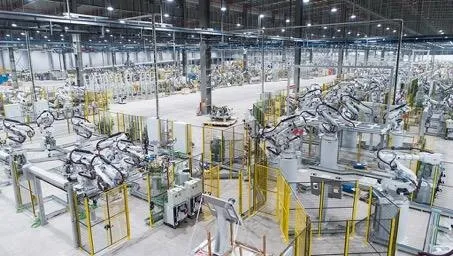VN prepares for new workforce in Industry 4.0
by ,http://vietnamnews.vn/society/481667/vn-prepares-for-new-workforce-in-industry-40.html09 December 2018 Last updated at 09:59 AM


|
| Remote-controlled robots in a VinFast factory. VNA/VNS Photo |
HCM CITY– The fourth industrial revolution is dramatically affecting labour markets around the world, including in Việt Nam, creating new kinds of jobs for which there will be expected shortages.
Trần Anh Tuấn, deputy head of HCM City’s Centre for Forecasting Manpower Needs and Labour Market Information, said that Việt Nam was already using “smart” factories, where robotics, artificial intelligence, cloud computing and data analytics were being used to link production and logistics processes, and make manufacturing more intelligent, efficient and sustainable.
The IT industry, recognised as the strategic sector in the 2019-2025 period, will need far more skilled workers than it has today.
Many new occupations relating to cybersecurity, information security, programming for mobile apps and 3D game design, are now being created.
At least 2,1 million jobs will be created in Việt Nam, mostly in computing, maths and engineering.
Other industries such as electricity, electronics, mechanical engineering, and automotive engineering will need a high number of human resources in the 2019-2025 period, Tuấn said, adding that 24,000 employees would be needed for the electricity-IT industries each year in the period, and 15,000 for mechanical engineering each year.
Gaku Echizenya, CEO of Navigos Group, said: "The labor market is experiencing unprecedented changes with the fourth industrial revolution.”
This means businesses have to improve by understanding the market and promptly respond to change and build effective recruitment strategies, Echizenya said.
The latest report on “Career Prospects & Skill Trends in Việt Nam within the period between 2018 and 2022” of VietnamWorks, the online jobsite under the Navigos Group, shows that 59 per cent of surveyed human resources professionals said robots and automation would be the technological factors with the largest impact on the labor market in the next five years.
The report this year surveyed more than 200 human resources professionals who hold managerial positions in top firms and corporations in Việt Nam.
Moreover, the telecommunications boom in the “mobile internet, cloud technology” as well as “processing power, big data” categories is also forecasted to create profound change.
Recruitment demands will change as a result of shifting nature of work and labor structure, according to the report.
According to HR professionals, the labor market will transform dramatically under the effect of socio-economic factors related to the nature of jobs and the labor structure.
Sixty-six per cent of HR professionals agreed with the need for “change in natures of work, flexible work” to stimulate change, followed by “the development of elite labor” and “the development of a young demographic”.
More notably, 40 per cent claimed “the need for privacy” and “greater awareness of environmental responsibilities” would have substantial impact on recruitment demands.
Up to one-fifth said the participation of women would undoubtedly change the labor market.
High tech and engineering would be the most promising job category in the near future, according to the report.
Around 90 per cent of respondents were certain that “high tech, engineering” and “computer and technology” would have increased demand in the near future.
Another category with great growth in the next five years would be “arts, design, entertainment, sports and media”. On the other hand, certain job categories would experience lower demand, such as “administrative and clerical”.
According to the report, the changes in the labor market would create new jobs with different competencies.
Eighty-seven per cent of respondents expect demonstrated "problem sensitivity" from their candidates, followed by “creativity and cognitive flexibility". On the other hand, "manual dexterity and precision" is regarded with little importance.
"Active learning" is the most essential basic skill for employees, the report showed.
Communication skills such as verbal communication, and writing and reading comprehension were not prioritised, the survey showed. "Cooperation" would be the most important cross-functional skill.
Second on the list is "people management", followed by "emotional intelligence" and "judgement and decision making", accounting for over 60 per cent each.
Employers prioritised “developing automation” and “recruiting employees with skills suitable for new technology”.
Many also paid attention to improving the quality of the current workforce. For those who selected they would implement "training for current employees", 47 per cent said they would "train internally" while only 20 per cent would "train through course providers".
Echizenya said that for employees, an active learning attitude, digital skills and soft skills such as teamwork and management are competitive advantages in the digital era.
At the same time, it is necessary for schools to adjust their enrollment plan and curriculum to improve students’employability.
“This includes looking closely at future career prospects, skill trends and encouraging students to strengthen their knowledge and skills through hands-on experience,” he said.–VNS





